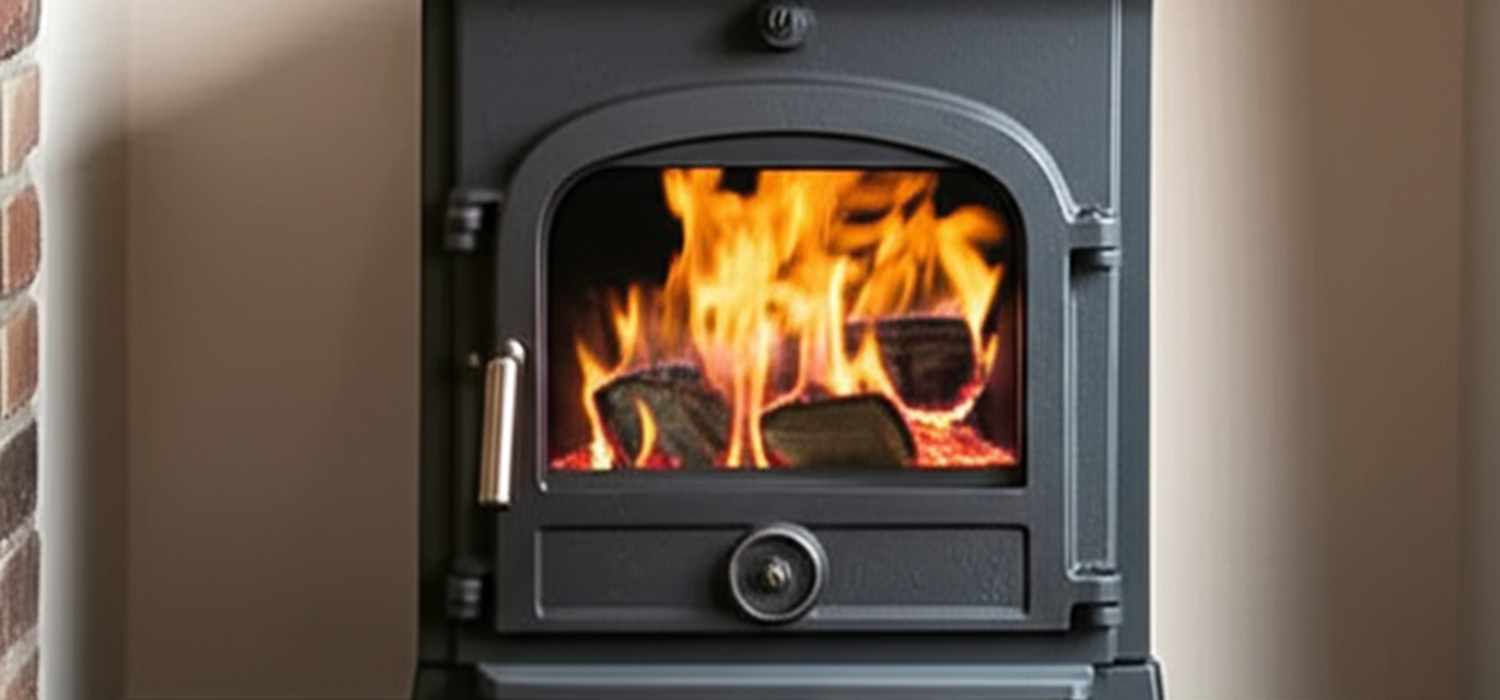
The Ultimate Guide to Choosing the Right Cowl for Your Log Burner
So, what cowl on a log burner? Simply put, it's a cap that sits on your chimney, keeping out pesky downdraughts, rain, and critters. Let’s find your perfect log burning stove cowl and make sure your fire burns bright and safe all year round. Keep reading to find out how!
Understanding the Purpose of a Chimney Cowl
A chimney cowl isn’t just a decorative cap for your log burner—it’s a vital piece of equipment that ensures your stove works safely and efficiently. Without it, you might face a host of problems like poor combustion, wildlife intrusions, and water damage. But when chosen correctly, a cowl can make a world of difference.
Preventing Rain and Snow Ingress
Living in the UK means you're no stranger to rain. And while you might not mind getting wet, your chimney certainly doesn’t appreciate the downpour. Without a cowl, rain and snow can easily enter your flue, leading to rust and corrosion over time. This moisture can damage your stove’s components and affect its performance.
But here’s where the cowl comes to the rescue. By acting as a protective shield, it prevents rain, snow, and even fallen leaves from getting into the chimney, ensuring your stove stays in top condition. Think of it as a raincoat for your chimney—dry, safe, and ready to perform no matter the weather.
Protecting Against Bird and Animal Entry
Ever had a bird start making a nest in your chimney? Or perhaps a squirrel thought it would be fun to climb in and see what’s going on? It happens more often than you’d think, and it’s not just annoying—it’s dangerous. Birds and animals can block your flue, causing dangerous build-ups of gas or creating a fire hazard.
A chimney cowl with a protective mesh or grid keeps those cheeky intruders out while still allowing the smoke to escape. No more unwelcome guests, just a clean, efficient log burner ready to keep you warm.
Improving Draft and Preventing Downdraft
Picture this: you’ve built a lovely fire, the room’s warming up, and everything seems perfect—until the smoke starts swirling back into the living room. That’s the dreaded downdraft in action, where cold air or smoke gets pushed back down the chimney. Not only does it make the room smell like a campfire, but it also hampers the efficiency of your stove.
This is another area where a cowl shines. It helps regulate the airflow through your chimney, ensuring the smoke is drawn up and out, and preventing that annoying downdraft. With a properly fitted cowl, your fire burns cleaner, hotter, and safer.
Different Types of Chimney Cowls for Log Burners
When it comes to choosing a cowl, not all options are created equal. Each type of cowl is designed to tackle specific issues, from downdrafts to pests. Here’s a breakdown of the most common types and their benefits.
Anti-Downdraft Cowls
If you live in a windy area or find that your stove regularly suffers from downdrafts, an anti-downdraft cowl might just be your best friend. This type of cowl uses a special design to prevent cold air from blowing back down your chimney. It’s perfect for areas where the weather can change on a whim, keeping your stove’s airflow steady and your home smoke-free.
For example, imagine having a cosy fire on a crisp winter evening, only for the wind to change direction and send smoke billowing into your living room. An anti-downdraft cowl ensures that doesn’t happen, letting you enjoy the warmth without the hassle.
Bird Guards
Birds are lovely creatures, but not when they decide to move into your chimney. Whether it’s sparrows, pigeons, or even seagulls, these feathered friends often see your chimney as the perfect nesting site. Not only does this block your flue, but it can lead to dangerous situations if the nest catches fire.
Bird guards are designed with mesh or grilles to keep birds (and other critters) out of your chimney while still allowing smoke to escape. They’re a simple yet effective way to prevent wildlife damage and keep your flue clear.
Rain Caps
Rain caps are the go-to solution for protecting your chimney from the wet British weather. Their primary job is to prevent rainwater and snow from entering your chimney and causing rust and corrosion. While they don’t always prevent downdrafts or protect against pests, they are essential for ensuring your stove stays dry and rust-free.
Imagine waking up to a damp, chilly morning and trying to light your log burner only to find the flue is clogged with water. A rain cap stops that before it can happen, giving you peace of mind during stormy days.
Rotating Cowls
If you live in an area with unpredictable wind or turbulent weather, a rotating cowl might be exactly what you need. These cowls are designed to spin with the wind, adjusting their position to ensure optimal airflow. This constant motion helps regulate the draft, even in gusty conditions, keeping your stove working efficiently no matter how strong the wind gets.
This type of cowl is particularly useful if your chimney tends to suffer from erratic winds or if you’ve noticed frequent downdrafts. A rotating cowl keeps your fire burning steady, no matter the breeze outside.
Choosing the Right Cowl for Your Needs
Now that you’re familiar with the different types of chimney cowls, how do you choose the right one for your log burner? Let’s dive into what you should consider before making your decision.
Considering Location and Weather Conditions
The first step is to assess your local weather conditions. If you live in a windy area, you might want to go for a rotating cowl or an anti-downdraft cowl to keep things stable. On the other hand, if you’re in a particularly rainy or snowy region, a rain cap is essential to protect your chimney from the elements.
For example, living on the coast with strong winds and rain? A rotating cowl paired with a rain cap will ensure your stove runs smoothly all year round.
Flue Type and Diameter
Not every cowl will fit every chimney, so it’s crucial to check the size and type of your flue before purchasing a cowl. Measure the diameter of your chimney and make sure the cowl you choose is compatible. An ill-fitting cowl can reduce airflow, block smoke, or even cause more harm than good.
It’s always best to check with a professional installer if you’re unsure about compatibility. After all, you want your cowl to work effectively and help your stove perform at its best.
Installation and Maintenance of Chimney Cowls
Once you’ve selected the right cowl, it’s time to install and maintain it to keep your log burner running efficiently.
Installation
Most chimney cowls are relatively easy to install, but if you’re unsure, it’s worth calling in a professional to get everything set up correctly. A well-installed cowl should fit snugly over the chimney or flue, ensuring proper airflow and security. A badly fitted cowl can cause airflow issues or, worse, become loose and fall off during windy conditions.
Maintenance
Keeping your cowl in good condition is essential for continued stove performance. Regularly check for blockages, bird nests, or debris that could obstruct the cowl or chimney. Cleaning your cowl periodically will ensure it remains in top shape, allowing your log burner to run as efficiently as possible.
Other content we think you'll love
- Can Log Burner Glass Break?
- How Do Log Burner Fans Work?
- The Truth Behind the Smell of a New Log Burner
- The Ultimate Guide to Choosing the Best Wood for Your Log Burner
- How Long Does a Log Burn in a Stove?
- What Flue for Log Burner: Choosing the Right One for Your Home
- What Is a Log Burner Service?
- Who Can Sign Off a Log Burner?

